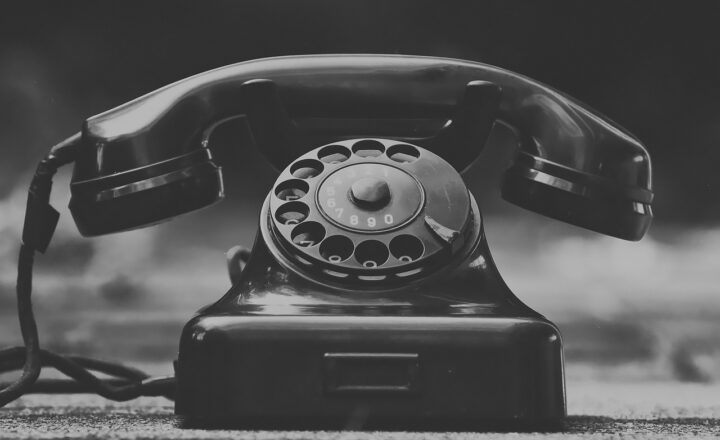Why Every Teen Had a Flip Phone in the 2000s: A Look at Iconic Gadgets
November 12, 2024

The 2000s were a transformative decade for technology, particularly in the realm of mobile communications. Among the standout devices of this era were flip phones, a symbol of teenage identity and connectivity. For many, owning a flip phone was not just about calling and texting—it represented freedom, style, and social status.
1. The Rise of the Flip Phone
The flip phone made its entrance into the mobile market following the basic mobile phones that dominated the 1990s. By the early 2000s, the designs had evolved, combining functionality with a flair for fashion. Popular models like the Motorola Razr and the Nokia 6260 appealed to teens craving both utility and style.
The flip phone’s compact size allowed it to fit easily into pockets or small bags, and its unique clamshell design was both eye-catching and practical. When you flipped it open, you were ready to connect; when you closed it, you were signaling an end to the conversation – a subtle form of communication that only the flip phone could deliver.
2. Fashion Statement and Personal Identity
During the early 2000s, owning a flip phone became synonymous with being cool. Teens weren’t just using their phones for calls; they were expressing their personal styles. Flip phones came in a variety of colors, designs, and customizations, allowing teenagers to select devices that matched their personalities.
For many, customizing their phone was an essential part of the ownership experience: colorful cases, interchangeable faceplates, and even decorative charms became common accessories. The Motorola Razr, for instance, became a fashion icon, and owning one elevated a teen’s status within their social circle.
Moreover, teens were often influenced by celebrities and peers, showcasing their flip phones as a lifestyle choice that spoke to their individuality rather than merely being a communication device.
3. Connectivity in a New Age
For many teenagers, flip phones represented a revolutionary shift in how they communicated. Before the proliferation of smartphones, these devices offered features that changed the landscape of social interaction among teens. Text messaging became far more accessible, enabling teens to stay connected with friends instantly.
The ability to send and receive texts, take pictures, and even use basic mobile internet capabilities made flip phones essential. Messaging through SMS became the preferred form of communication, allowing users to exchange messages without the constraints of needing to be in constant vocal conversation.
In an age where every second in communication counted, the flip phone facilitated quick replies and exchanges, fostering a unique culture of brevity in communication.
4. Nostalgic Gadgets that Defined a Generation
Each generation has its iconic gadgets, and the flip phone is undoubtedly one of them. As the 2000s progressed, nearly every teen had a flip phone, making it a communal tool that fostered social interactions.
Whether it was playing games like Snake on their old Nokias or synchronizing their contacts with friends, these simple devices birthed many shared experiences. The charm of flip phones lay in their relative simplicity in a rapidly advancing tech world, making them relatable and cherished even today.
Additionally, television shows and movies from the era often showcased flip phones, further embedding them in the cultural narrative of the time. Whether it was a pivotal plot point in the latest teen drama or a symbol of youthful rebellion, flip phones were omnipresent in multimedia, securing their place in teenage lore.
5. The Shift to Smartphones and the Legacy of Flip Phones
As smartphones began to take over the market in the late 2000s, flip phones slowly faded from the teenage landscape. With the rise of touch screens and app integration, the utility of flip phones diminished. However, the nostalgia and fond memories associated with them remain strong. Flip phones were the devices that bridged the gap between traditional mobile phones and today’s smartphones.
This cultural phenomenon also sparked a new appreciation for compact mobile devices, leading to a recent resurgence in flip phone popularity among certain demographics seeking simplicity in a complex world cluttered with notifications and apps.
Ultimately, flip phones were more than just gadgets; they were integral components of teenage life in the 2000s, shaping communication, fashion, and social dynamics. As we look back on that period, it’s clear that every teen having a flip phone represented a defining moment in tech history and pop culture.
Conclusion
The flip phone stands as a testament to an era when mobile communication was evolving rapidly, encapsulating teenage experiences filled with exploration, self-discovery, and growing independence.
Reflecting on this aspect of our digital history reminds us that while technology continues to advance, the essence of connectivity and personal expression remains timeless. Revisit those iconic gadgets, and it’s easy to see why every teen had a flip phone in the 2000s—it was unique, instant, and, above all, cool.








